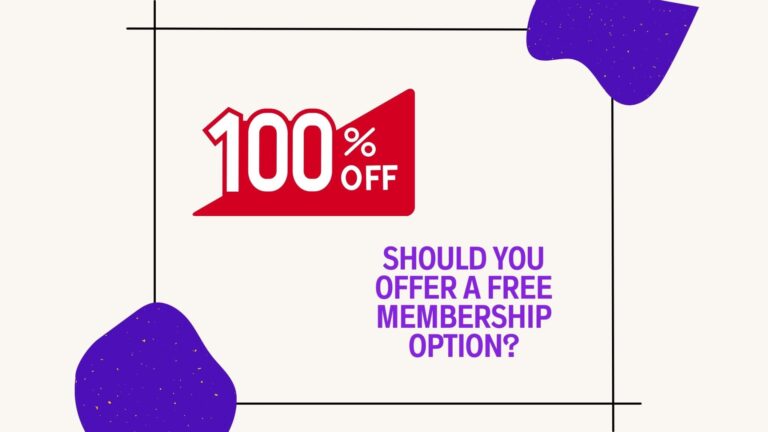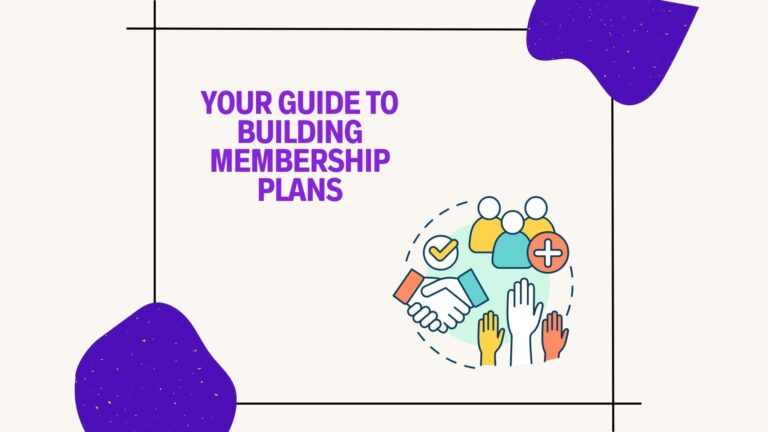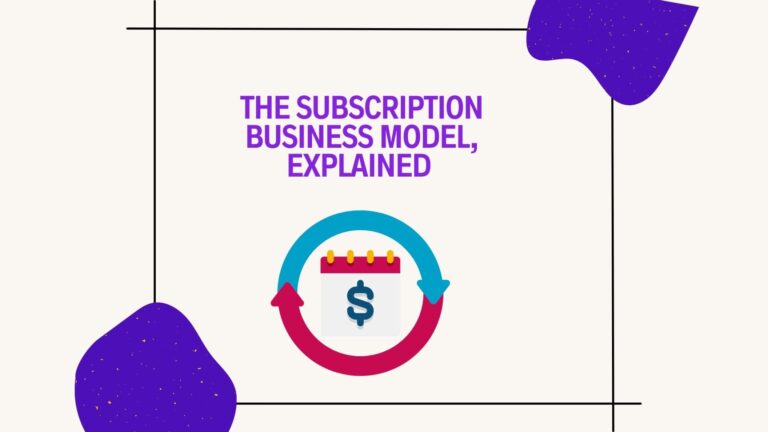How did you come up with the current pricing model for your subscription?
Does the membership pricing strategy pay off? Did you optimize the use of your resources to keep existing members satisfied and to draw new ones in? Would you call your subscription pricing successful?
A smart subscription pricing model and competitor-based pricing can both give you a strong competitive edge in the market. With value-based pricing, you give customers the services they believe they deserve, and that is pretty much all there is to it.
Why is a great membership pricing strategy so important?
Subscription pricing based on quality experience and engaged users is a guarantee for more revenue. Yet, building such pricing strategies doesn’t happen overnight, and there are many aspects to consider.
For starters, you need to balance what you need, what you have, and what you can afford. The next step is to alert the marketplace and work on competitor-based pricing. The more attentive you are, the more successful your pricing model will be.
Which steps did you undertake so far? Did you cover all price points, or are there still shortcomings you need to work on?
To help you, we’ve summarized the 5 leading membership pricing models and strategies that proved effective. Check them out:
The Freemium plan

We recommend freemium to new businesses looking to expand their database and win market share. What you do here is to enable free sign-up for limited membership packages, such as a stripped-down version of the content, or some of the features.
The Freemium pricing model, as well as demos and free trials, let potential clients get to know your service. It is a great way to lure them in and get their attention, but this is not (and won’t be) a successful revenue methodology.
This is not a minor issue, since, for decades, businesses jump on the freemium bandwagon with huge expectations. Freemium is not a shortcut that will magically boost your potential or drag visitors up the funnel and turn them into prime leads. If you don’t do the rest of the job, your free trials may not even be efficient.
A very common mistake, for instance, is reserving all the best features for paywall users, namely those who subscribe to pay. While this seems to pay off at the beginning, it is also a slippery slide. It can drive clients directly to the competitor, who is more than happy to hear what brought them there and to make a counteroffer. This is why you need a quality membership plan paired with a free trial, not the other way around.
last but not least, freemium pricing strategies work the best with marketing communication. Keep audiences engaged, and tell them what is at stake.
Joining Promotion Model
You can also consider a subscription pricing strategy called Joining Promotion. It gives clients a rare possibility to apply or join the association and awards them with quality content for doing so. However, the sign-up is not offered for free, and the client still needs to pay for the registration.
You can even simplify the pricing model by offering gift cards or inviting leads to participate in a contest. Consequently, they would get a membership card or only a QR code that secures them benefits not available to the wider audiences. For instance, you can offer discounts for business users or a special benefit that is not usually on the table. In return, the user is contractually obliged to remain a member for a certain period.
When is Joining Promotion best applicable? We’d advise you to try it out in case a free trial doesn’t offer the necessary value. This way, you can convince visitors of the benefits of your membership without huge marketing investments.
Tiered Pricing model
Tiered pricing lets you bring your recurring fees in line with your lead generation efforts. It is the most structured pricing strategy for businesses focused on growing their revenue.
What happens here is that there are multiple pricing strategies and plans related to a different package of services. The visitors choose which one is right for them.
In the back end, you need to group benefits in a logical way to address all consumer types out there. If you can give customers what they want, and charge a reasonable price for it, this subscription pricing type will be all you need.
If you run a business by yourself, your target audience is probably not somewhere in the top corporate world.
Experts call this strategy the ‘Good-Better-Best’ pricing model, and they recommend it the most in the retail niche. The rationale behind it is to give customers choices, instead of forcing them into an ‘all-or-nothing’ scenario.
And yet, not everyone is a pricing expert. You need to price each tier with care to avoid mistakes. For instance, the startup plan needs to be affordable but beneficial, so that clients are not discouraged from joining. This is where the freemium package comes in handy.
Monthly vs yearly pricing model
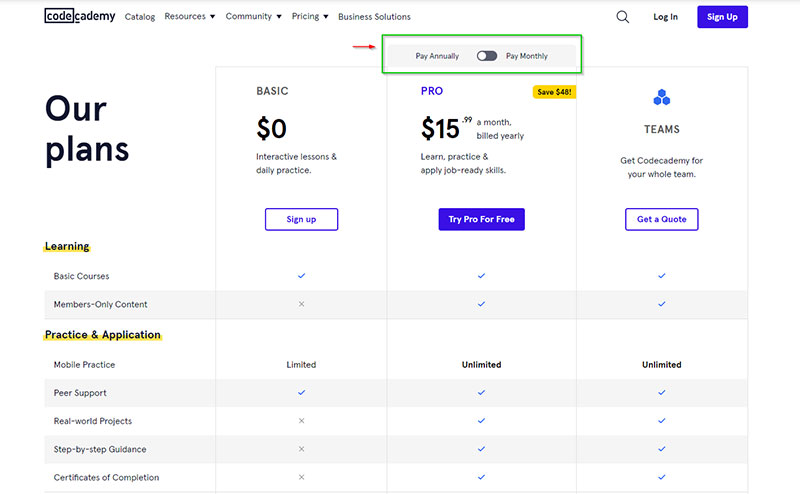
The biggest struggle of any subscription pricing business is whether to charge monthly or annually. We say -why not get the best of both worlds?
As mentioned before, everyone wants to have a choice. Your customers are no exception.
As you decide how much to charge, create a yearly plan that amounts to 10 monthly memberships, instead of 12. This will make clients consider it, and provide incentives for a longer commitment.
Of course, there will be subscribers who can’t afford yearly subscription pricing. there will also be those who simply prefer not to commit themselves. Make sure there are multiple attractive monthly plans for them.
Recurring payments vs one-time fees
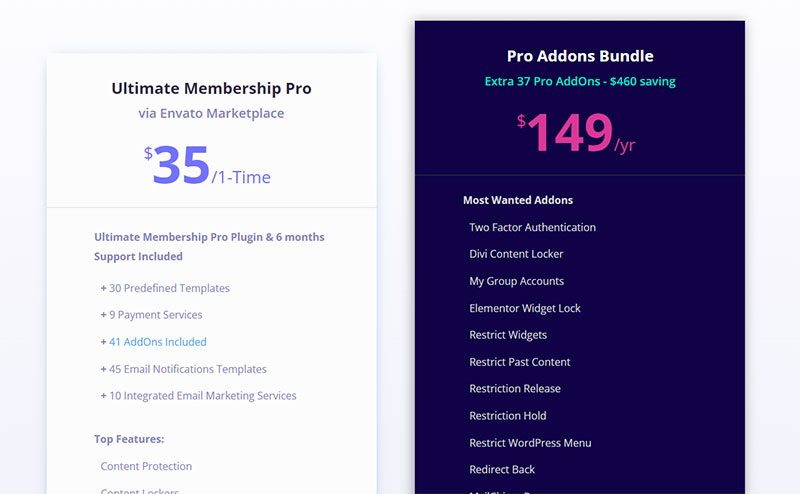
You can go both ways: ask customers to pay a single fee upon sign-up, or charge them repeatedly (per month or year). Each of these approaches has its pros and cons.
A single fee, for instance, makes entry easier and showcases the value of your content better than other pricing models. For example, our plugin, Ultimate Membership Pro has a one-time fee.
It also incents trust, as it doesn’t seem you are desperate to bring new clients in. Better yet, you can increase pricing or add fees over time, to cover your marketing expenses. The best way to keep such a pricing strategy alive is to offer members upsells in parallel.
Recurring payments, on the other hand, are a very stable safety net. They will keep your bank account full, and you will have a steady income all the time. While this does sound like a reasonable option, keep in mind that the job is not done. You will have to keep customers happy and engaged so that they keep paying.
Create an amazing membership website with the best tool available
Ultimate Membership Pro is an all-in-one membership solution with endless membership features to manage member subscriptions.
Everything you need from a membership solution:
- Restrict access to everything
- Easy to set up membership plugin
- Unlimited membership levels
- Run recurring payments with subscriptions
- Offer discount codes
- Members management
- Affiliate program
- Email notifications
Tricks to a successful subscription pricing model
Increase dues in small portions
Whatever you are selling, avoid price shocks. Bring prices up a small percentage at a time, so that clients are not frustrated.
Keep in mind that they are alert for incremental increases they can’t handle, and they will oppose your pricing strategy. Believe it or not, they are more likely to accept small increases that surprised them.
Create VIP pricing models
Make your pricing strategy more attractive by adding a VIP layer. This way, interested members can get a special status or register for exclusive events.
Remember to keep them engaged with special gifts and discounts.
Let clients pay in installments
Another thing customers will appreciate is being able to pay in installments. You should consider this inclusive pricing model for services that are more expensive or difficult to sell.
Test the price points to see what works the best in your market
Once your website is live, keep an eye on the market and adjust the pricing strategy upon need. You’ve probably done all due research to avoid miscalculations but test the pricing model here and there.
The market is very flexible, and your pricing model should follow this trend.
Generate urgency
This is probably the key tip we can give to anyone offering subscription pricing. Would early-bird specials make sense for you too?
We recommend this subscription pricing model for event and training organizers. Make clients aware that there are limitations, and encourage them to react quickly.
Make the best out of your discount policy
Many subscription pricing models fail because of a non-efficient discount policy. what we are trying to say here is only offer discounts if you get something in return.
To give you an example, a discount limited in time will attract multiple subscribers at once. The offer will still be the same, and so will your efforts on the job. The profit, however, will be much bigger.
A discount with a deadline also creates a feeling of urgency. Clients are always locked to the ‘smart-deal’ idea and want to be a part of something exclusive.
Consider comparative pricing
A smart way to anchor prices is to compare your membership fee to similar day-to-day purchases.
You have probably seen something like this: How much do you spend on a cup of coffee per day? Invest this amount in ou membership, and gain some amazing benefits!
Many leading companies do this, and for a good reason. Clients need to be able to estimate and relate your membership prices to something they know.
Stick to value-based pricing
Successful pricing tiers are a result of hard work and multiple price points and not a mirror of what competitors are doing. True, you need to follow the competition and check what their customers pay, but this should not be decisive for your plans.
Instead, you should make sure that your tiered pricing corresponds to the value you offer for each plan. This is the only way to keep clients on board.
Value-based pricing will also play a huge role in planning the tiered pricing for each membership level. If you adopt the competitor’s price without being able to offer the same level of service, you will hardly get any new customers.
Keep friction low and help clients decide
True: customers should have multiple choices and be able to pick a plan that works for them. Your role in the process is not to confuse them.
Make it simple. You don’t want clients to experience decision fatigue. Add just the necessary options, and op for a familiar scenario such as Basic, Pro, and Enterprise, for instance. Confusing and custom plans create unnecessary friction and lead clients towards your competitors.
Experts call this the Paradox of Choice. When given too many options, people usually don’t choose any of them.
Conclusion
Coming up with a membership pricing strategy that works is not an easy task. You need to know your audiences and your market, and you need to make services more competitive. In essence, however, it all comes down to the plans we discussed. Try them out, and you will soon have a way to bring new customers on board.
Great pricing strategies are dependent on detailed research, so check the market upfront. Examine the needs of potential customers and find ways to assess them. If you offer solid content, you can even opt for ambitious pricing and earn more.
Finally, keep pricing in line with the provided value. Align numbers to actual value metrics, and avoid discrepancies. This way, you will not only enrich your customer base but also retain the people you already have on board.
If you enjoyed reading this article about the best membership pricing strategy you should read these as well:




